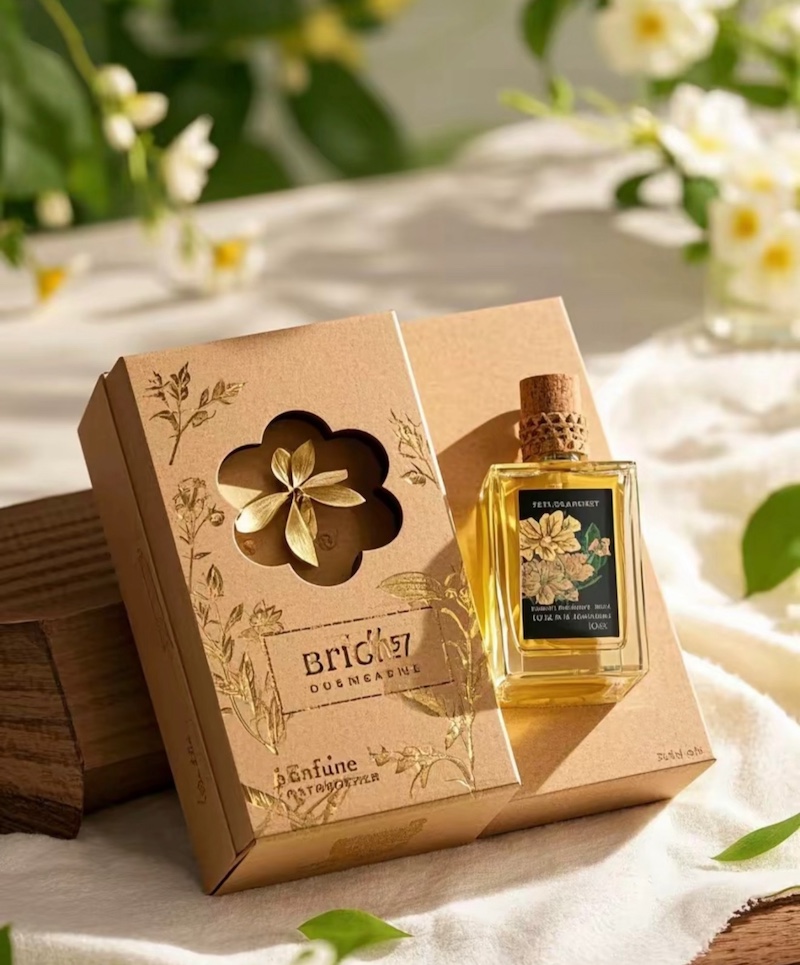What is Foil Stamping?
In today’s luxury packaging world, visual appeal is everything. Whether it’s a perfume box shimmering under the light or a cosmetic package that glows with subtle metallic tones, one process plays a key role in delivering that elegant finish — foil stamping. This technique, also known as hot foil printing, has become a hallmark of premium packaging.
At Winpack Printing, we believe that packaging is more than just protection — it’s an expression of a brand’s value, quality, and creativity. Using state-of-the-art Heidelberg printing machines and advanced finishing equipment, our team brings the brilliance of foil stamping to life for brands across cosmetics, fragrances, jewelry, and gift industries.
1. An overview of foil stamping
Foil stamping is a specialised printing technique that involves using metal dies, heat and pressure to stamp foil films.
It is used in a variety of applications, including:
- Stationery
- Product packaging
- holiday cards
- Seals
- Pocket folders
- Postcards
- Certificates

The hot stamping method, as it is known today, was first conceived at the end of the 19th century.
Nowadays, it is used to make products more visually appealing and enhance their perceived value.
A foil is a thin film covered with colours that are applied to a product in a process called hot stamping.
The colour is applied to a transparent film, which acts as a carrier to transfer the colour to the product.
The second foil layer contains pigmented sediments, while the third layer is a heat-activated adhesive that attaches the sediments to the product.
Similar to embossing and spot UV, foil stamping can be used on any type of paper.
However, it is more effective on smooth, even stock than on lined or textured stock.
2. Types of foil stamping
Depending on your substrate and the kind of finish you desire, there are four methods of hot stamping, which are discussed below.
Flat foil stamping is a simple, low-cost process in which the foil is transferred onto the substrate by a copper or magnesium stamp. This method produces a foil design that comparatively protrudes out of the surface.
In vertical foil stamping, foil designs are stamped onto flat and cylindrical surfaces.
In sculpted foil stamping, brass dies are used to create a raised image, providing a defined, carved appearance.
In peripheral foil stamping, foil heat transfer is used around the entire circumference of the product.

The colouring is usually gold or silver to create a luxurious effect.
It comes in different finishes, including glossy, matte, metallic, holographic sparkles, and wood grains.
3. Types of foils used
Foils come in various forms to help create unique packaging and products that reflect your marketing campaign or brand image.

Metallic foils provide a nice patina in colours such as silver, gold, blue, copper, red and green.
 Matte pigment foil has a dull appearance but strong colour depth.
Matte pigment foil has a dull appearance but strong colour depth.
 Gloss pigment foil is a high-gloss finish that is not metallic, and is available in a range of colours.
Gloss pigment foil is a high-gloss finish that is not metallic, and is available in a range of colours.

Holographic foil is used to transfer hologram images, giving products a futuristic and eye-catching appearance.

Special effects foils can be applied to produce a variety of textures, such as leather, pearl, or marble.
4. The hot stamping process
Hot stamping is a machine-based process.
Your design is etched onto a heated foiling die and stamped under high pressure to adhere a thin layer of foil to the substrate.
This fundamental method uses heat and pressure to achieve the desired result on the substrate.
The die may be made of brass, magnesium or copper.
Although it is costly to purchase, it has several applications.
5. Advantages of foil stamping
Since foil stamping does not require ink, the colour of the foil does not depend on the colour of the substrate on which the design is stamped.
Light and metallic foils can easily be applied to dark coloured papers.
Hot stamping provides a variety of finishes, enabling you to experiment with your branding and packaging.
The eye-catching effect that can be achieved using this method also makes it a good way to stand out from competing products.
For other print finishing options, please refer to: Embossing and debossing, spot UV, window patching and soft touch.





OEM Services
How long does the production process take?
Production time depends on order quantity, complexity, and customization. Generally, the process takes 7-20 days after design confirmation and sample approval. We strive for fast turnaround times while maintaining high-quality standards.
What is OEM packaging, and how can Winpack Printing help?
OEM (Original Equipment Manufacturer) packaging refers to custom-designed packaging solutions tailored to a brand’s specifications. At Winpack Printing, we provide end-to-end OEM services, including design, proofing, printing, and production, to help you create high-quality, market-ready packaging that aligns with your brand identity.
About Us
What are your lead times?
Production typically takes 12-16 days, and 16-21 days for larger volume orders. Shipping times will depend on the shipping channel you choose.
Can I get a sample?
Yes, currently sample free for reference, only need to pay the delivery charge. Customized sample charge sample fee and delivery cost.
What kind of format is available for printing?
CDR, AI, PS , PSD. high resolution JPG (please Convert text to curves. If not, some words will be missing.)




Start Your Packaging Journey Today
Discover Our Curated Collection of Bespoke Packaging Cases & Tailored System Solutions
© 2025 WINPACK PRINTING. All rights reserved

























Wenhua Printing packaging
winpackprinting
Winpack Printing